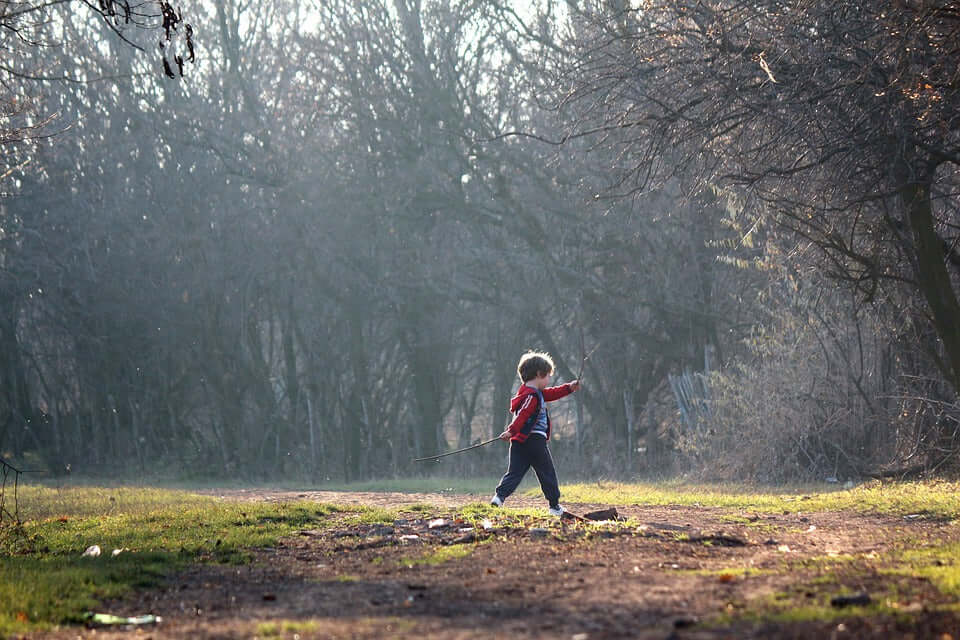Nature is good for the mind, body, soul – and our children! Playing in nature allows children to develop many different skills including independence, risk-taking, creativity and physicality to name a few. As we live in this technological era, children are spending less and less time outside. Evening play, more than not, takes place inside as parents wind down after a long day at work. But can we change this?

Don’t get me wrong, when I get in after work, all I want is to cuddle up on the sofa and get comfy. I never thought that by spending some time in the garden once I got in, would make me feel so good. Looking around me, I could see colourful wildflowers and the rippling motion of the water in our pond. I could hear beautiful bird song and feel the warm sun on my face. This beats sitting inside any day!
It was at this moment, that I really felt the benefits of being outside and this got me thinking. Why not change my routine and make this a daily habit? Linking to children, just think how this extra time outside could support their development and improve their mental and physical health…
Here, I present an idea. Loose parts play is a fantastic concept to assist children’s learning and it can be done outside too! Whether at a park, green space or garden, loose parts play can take place anywhere.

The theory itself was coiled together by a UK architect called Simon Nicolson. In this form of play, children use objects which have no specific purpose - this allows the play to be open-ended and child-centred. For example, you could have a pinecone which the child puts next to their ear and pretends is a walkie talkie, or there could be a stick in which the child uses as a magic wand. The beauty of this natural play is that it is free – children can use what they find in their natural environment. It also allows play to be child-led and brings the opportunity for development across many different areas.
 Moving loose parts play outside also means that children get the opportunity to experience risk and challenge. Outside, children can encounter new situations unavailable to them inside. They might use their loose parts to make a bridge and then try to walk across it. As well as developing their balance and coordination, through this activity, children learn how to assess risk independently which is a very important life skill. A child might use pebbles to make a tower – this allows them to problem solve and teaches them the aspects of gravity very early on. Loose parts play is a fantastic resource to have!
Moving loose parts play outside also means that children get the opportunity to experience risk and challenge. Outside, children can encounter new situations unavailable to them inside. They might use their loose parts to make a bridge and then try to walk across it. As well as developing their balance and coordination, through this activity, children learn how to assess risk independently which is a very important life skill. A child might use pebbles to make a tower – this allows them to problem solve and teaches them the aspects of gravity very early on. Loose parts play is a fantastic resource to have!

Start small. Go on a nature walk with your little one and collect things as you go. Some suggestions include:
- Fallen leaves
- Herbs
- Pebbles
- Branches
- Twigs
- Sticks
- Pinecones
- Acorns
- Freshly mown grass
- Straw
Use these items in loose play and give your child the space to explore. Enjoy as you watch their imaginations run wild. By moving loose parts play outside, you as well as your youngsters will reap the benefits.
Have fun!

Written by Julianne Jessett


